By Jeffrey A. Denman
In early 1942, the air war over Germany was taking its toll on the Royal Air Force. Prisoner-of-war camps throughout Germany were bursting at the seams, and as February rolled around rumors began to spread that the Germans were building a new camp somewhere in Upper Silesia near the Polish border. The Germans spent a great deal of time and effort on the construction of this new camp. It was to be situated far from any Allied or neutral country. Therefore, if escapes were attempted, they would be extremely difficult and recapture the likely result.
For most airmen fortunate enough to survive their plane being shot down, the war took on a different role once they found themselves behind the wire. No longer were bombing runs or engaging enemy fighters the primary concerns. Now, the airmen needed to survive, harass the enemy to the best of their ability, and escape. Sometimes, just getting to the camp could be hazardous.
Flight Lieutenant Nathaniel Flekser reflected on his own experience: “How lucky I really was dawned on me when I later met RAF prisoners who were shot down while on bombing missions over Germany. They were attacked by angry civilians, brutally interrogated by the Gestapo, and packed into cattle cars. One crew was thrown into a furnace.”
The usual greeting from the German captors, “For you, the war is over,” was the furthest thing from the truth. It now became a different kind of battle—a battle that involved physical and mental endurance and still the possibility of death outside the wire.
“His duty was now survival, escape, communication. He no longer engaged his enemy in the air. He met him in the isolation of an interrogation cell at Dulag Luft…. He met him behind the barbed wire at Stalag Luft III. He met him on a forced march in the dead of winter. He met him in the mare’s nest of Stalag VIIA,” wrote the historian of the Association of Prisoners of Stalag Luft III.
Security at Stalag Luft III
RAF aircrews were regarded with some degree of respect by the Germans and, given their reputation as excellent soldiers, their escapes had a better chance of succeeding. Therefore, the new camp would have tight security.
Stalag Luft III was located just south of the town of Sagan (now Zagan, Poland), approximately 100 miles southeast of Berlin. The camp was one of six POW camps operated by the Luftwaffe for British and American airmen. The Wehrmacht and the Kriegsmarine also operated their own system of stalags. Geographically, the area was desolate, a perfect location for a POW camp. Winter temperatures plummeted well below zero, and the surrounding countryside consisted of either flat farmland or dense pine forest.
The Germans had learned a great deal about incarcerating prisoners. They originally cut two new compounds out of the forest with six huts in each, and all the huts were raised off the ground so the detection of tunnel activity could be more easily ascertained by the German ferrets, guards whose duty it was to detect escape attempts. Later, the Germans would regret the fact that they built concrete foundations underneath the washrooms and the stoves. In addition, trapdoors were built in the floors and ceilings to make the process of inspection more efficient. Eventually, Stalag Luft III would expand to hold 10,000 POWs by war’s end.
The barbed-wire fences had an ominous appearance. There were two fences with a gap of several yards between them and an overhang on the side facing the compound, which made them virtually impossible to scale. About 10 yards inside the double fence ran the warning wire. All prisoners knew that to cross the warning wire meant certain harm from the machine guns situated in the guard towers, or goonboxes, that were spaced at distances of about 100 yards.
When the Germans chose the location of the camp, the composition of the soil was certainly an advantage for them. Under the topsoil was yellow sand that would make dispersal an almost impossible task for anyone attempting to tunnel out of the camp. Lastly, the huts were situated a good distance from the wire, making tunneling a difficult affair.
Life in the POW Camp
The new commandant of the camp was Colonel Friedrich-Wilhelm von Lindeiner-Wildau, a 61-year-old veteran of World War I and the winner of two Iron Crosses. Although he joined the Luftwaffe and became a member of Reichsmarshal Hermann Göring’s personal staff, von Lindeiner was not an adherent to the Nazi cause. When he was not allowed to retire, he made his way to Sagan as commandant.
Although food was in short supply, the POWs were treated fairly within the context of the Geneva Convention. It was the International Red Cross that saved the day for prisoners throughout the Reich. Since the camps provided only small rations for their prisoners, the Red Cross provided one parcel per man per week. Each parcel contained soup, corned beef, powdered milk, Spam, chocolate, coffee, cheese, and real jam. Nonetheless, given the rigors of camp life and escape activities, one never had the satisfaction of experiencing a full stomach. The prisoners were always able to hoard enough food for special occasions throughout the year, but food remained an obsession.
Prisoners were also permitted to receive mail and to send four cards and three letters per month. They were allowed to receive a 12-pound parcel every three months or so. These packages from their families consisted of daily necessities such as toothbrushes, clothes, and razors. The mortality rate was very low considering the circumstances. Some prisoners died from natural causes and others from triggerhappy guards who fired random shots into the compounds.
Roger J. Bushell: Big X
Late in 1942, Squadron Leader (S/L) Roger J. Bushell, commanding officer of No. 92 (Spitfire) Squadron, arrived at Stalag Luft III. He had been shot down on May 23, 1940, during the Battle of France. Taken to the Dulag Luft (Luftwaffe Transit Camp), he subsequently escaped and almost made it across the Swiss border before being recaptured.
He was then sent to Barth on the Baltic coast. After several months there, Bushell and a few others were being transferred to another camp when Bushell and a Czech officer in the RAF, Jack Zafouk, slipped under the floorboards of the truck they were riding in and made their way to Czechoslovakia. At this time, the assassination of SS Gruppenführer Reinhard Heydrich, Reichsprotektor of Bohemia and Moravia, had taken place in Prague, and Czechoslovakia was in an uproar.
Bushell was captured by the Gestapo and sent to Berlin for interrogation. Members of the Czech family that had harbored him were shot, and Zafouk was sent to Colditz. By the time Bushell reached Sagan, his hatred of the Germans was evident. Although he did not divulge his experiences with the Gestapo, it is thought that their tactics disregarded the provisions guaranteed by the Geneva Convention.
One prisoner recalled that Bushell was as tough as nails. The senior British officer was immediately made Big X, and no one did anything without his permission. He would decide who made an escape. He was a ruthless individual. He also knew full well that if he escaped again and was recaptured he would be shot.
Building the X Organization
Big X began organizing his escape committee right away. Some of the most notorious escapers were gathered at Sagan. Crump Ker-Ramsay and Wally Floody were in charge of tunneling. The American, A.P. “Junior” Clark, was put in charge of security. Ralph Abraham and Tommy Guest assumed control of the tailoring department, replicating German uniforms and civilian clothes. Johnny Travis created escape kits, while Tim Walenn and his forgers were copying ID papers and all sorts of passes. Forging was a painstaking and arduous task.
Bob van der Stok described the dangers of forging: “Most false papers were made with watercolor which was risky because it runs when wet. Type writer ribbon ink, stencil ink and printing inks do not run when the paper gets a little wet.”
Luckily, a number of guards proved helpful to the prisoners by providing maps, railway schedules, and a host of passes such as Ausweise, Vorlaufweise (pass and temporary pass), and Urlaubscheine (military leave pass). Many official documents took up to a month to create.
All in all, Bushell was able to assemble the most competent surveyors, forgers, tailors, engineers, and security experts for a mass breakout of over 200 men that would cause such a severe internal disruption that resources from the war effort would have to be diverted to the escapers. It was hoped that several men would be able to make their way back to England.
The Ferrets of Stalag Luft III
The X organization had several adversaries within the camp who had to be controlled, particularly the ferrets. The two main ferrets were Corporal Karl Griese, nicknamed Rubberneck, and Staff Sergeant Hermann Glemnitz, whose camp name was Dimwits. Rubberneck was not a favorite of the prisoners. He did not really like the prisoners, which was evident, and he had a very distasteful personality. Glemnitz was a different sort of man, conscientious in his work; he was the reason for many failed escape attempts. He was actually well liked by the prisoners and had the respect of many in the compound.
Underneath Glemnitz and Griese were several other ferrets known simply as Keen Type, Adolf, and Rudi. Keen Type was just as his nickname suggests, while Adolf wore a Hitler-like moustache. Rudi was nondescript other than, as with all ferrets, he had to be closely observed.
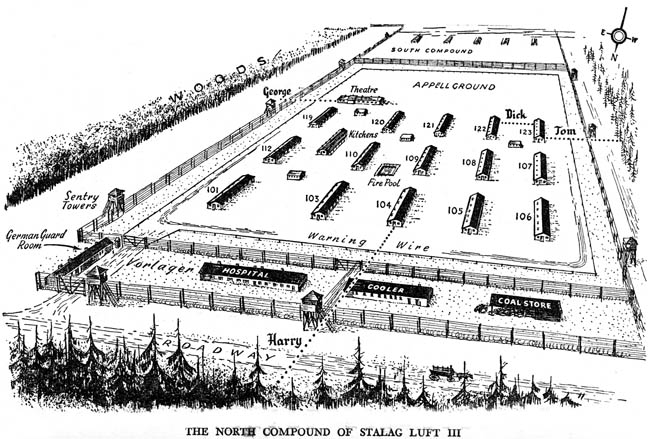
All ferrets could search any hut without warning, which made them extremely dangerous. Luckily, the prisoners instituted the Duty Pilot system under the direction of George Harsh, the head of internal security. All Germans would be logged in and out of the camp to ensure that no German was left in the compound to sniff out escape activity.
To protect all the illicit work being conducted, a complex set of hand signals was used to warn the various departments of Germans in the compound, thus giving them time to conceal the work that was being carried out. This system did not fail the prisoners. Alan Bryett recalled, “The Germans were wandering around in every hut so you had to be slick.”
Where to Dig?
By early April 1943, Bushell and Floody had chosen the locations for three tunnels. “Tom” was to go from Block 123 heading west toward the woods. This hut was the farthest from the main gate and thus received the longest warning of a snap inspection. The location of the trap was in the concrete floor by the chimney. “Dick” was to go from 122 and was to start in the washroom. An inside hut was not likely to be suspected. “Harry” was to head north from 104 and would be the least likely to be suspected because of the length involved. Harry was to begin under a stove in one end of 104.
Delmar T. Spivey, an American, had the opportunity to inspect the traps. “So skillfully were they constructed that I couldn’t find the trap leading to any of them [tunnels] even when I was told I was looking at it…. The entrance was so cleverly hidden that I couldn’t find it even when I got down on my knees and searched the spot where I knew it to be.”
Bob van der Stok, a Dutch pilot, observed that there was a trapdoor 10 feet down the tunnel shaft with a false bottom, so that if the Germans found the trap and destroyed it the real tunnel would be preserved and the prisoners would still be able to access it from another location.
The ingenuity of the prisoners was brilliant. For instance, to start Harry’s trap an old pick head taken from a Russian POW was attached to a baseball bat and used to hammer away at the concrete until dirt was reached. Many diversions took place outside the hut that helped mask the noise inside.
Sand dispersal was a huge obstacle to overcome. The problem was how to spread the yellow sand among the ordinary garden soil. Peter Fanshawe came up with the brilliant solution to use trouser bags. The legs of woolen underpants were cut off and the ends tied with a piece of string. The string went around a man’s neck with the underpants legs inside the legs of his trousers. There was a pin attached to the bottom of each bag and a string tied to each pin. The strings went up inside the trousers to the pants pockets. At the trap, the bags would be filled and then the “penguin” would go to a particular spot, pulling the string, and out would come the sand from the bottom of his pant legs.
Constructing the Escape Tunnels
The actual tunneling was a very dangerous proposition. There were always two diggers working together, one facing toward the dig and one facing away. The man facing away dragged the dirt away from the face of the tunnel. Each tunnel was shored with bed boards, but there were often situations where the roof would cave in and the number two man would have to pull the other digger out, usually while he was choking on sand and dirt. A wooden railway system was used for sand removal, and the railway cars were pulled back along the length of the tunnel by another member of the tunnel team.
At the bottom of each shaft was a chamber that contained an air pump and a storage area. The tunnel was ventilated using old tins that were connected and laid under the floor of the tunnel. At the other end was an air intake pipe that led up to the surface.
Fat lamps were originally used to light the tunnels. The fat from mutton soup or a similar concoction was put into a small container, and then a makeshift wick that was made from the drawstring of a worn set of pajamas was inserted. Fat lamps were smelly and created soot, so it was not the greatest lighting technique. However, when a prisoner stole 800 feet of electrical wire, the tunnels were wired for light after being connected to the camp’s power source. Fat lamps did have to be used for daytime tunneling, as the camp’s generator was not turned on during the day.
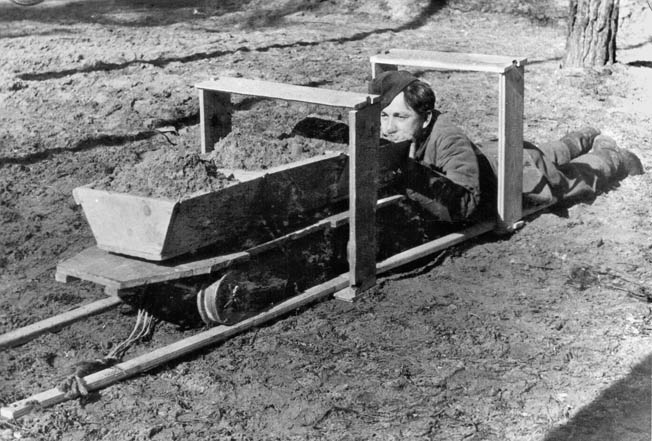
A Major Setback for the Prisoners
In mid-June 1943, a piece of news shook the prisoners. Russian prisoners were now clearing the trees on the south side of the fence so that Americans would have their own compound. If the compound were finished before the tunnels, the Americans would miss out on the escape. Bushell decided to go all out on Tom because it was the longest.
Work progressed until the tunnel was 260 feet long. Bushell decided that it was long enough even though it was some 40 feet short of the wood, but 140 feet outside the wire. However, one of the penguins was careless and left yellow sand on the ground before it was covered up. Glemnitz saw it, and the compound was abuzz with ferret activity. In the summer of 1943, Tom was finally discovered. It was a devastating piece of news.
After the discovery, Bushell decided that it was important to lie low, so tunneling ceased for about two months. Unfortunately, soon after the Germans blew up Tom, the Americans were moved to their new compound. It was a hard day for the Americans, but the loss of Tom was most frustrating for the British and other Allied POWs who had already been behind the wire for several years.
Charles Huppert, one of the Americans involved in the escape organization, was frustrated yet resigned. “I didn’t like it because all the work I did was for naught. But, there was nothing you could do about it, so you accept it.”
In late 1943, with the Germans clearing the woods to the west where Dick was supposed to go, Harry seemed the only logical choice. It was decided to reopen Harry on January 10, 1944. The escape committee decided to put the sand underneath the theater seats, as there was a gap of about one meter between the floor of the theater and the ground below. With the snow covering the ground, it would be impossible to hide the yellow sand outside.
The Kugel Order
By the middle of February, Harry was two-thirds of the way complete. There were a few setbacks, but work on Harry continued to move forward. The mood was lighter among the prisoners. It did not last long, as the escape business took on a more ominous air. At the end of February, Field Marshal Wilhelm Keitel, chief of the Supreme Command of the Armed Forces, issued the order known as Stufe Romisch III, which said that every escaped Allied officer was to be handed over to the Gestapo. The recaptured officers were to be officially reported as “escaped” and not recaptured.
Shortly after the news broke, the Gestapo paid a visit to Stalag Luft III, informing von Lindeiner that harsher measures would be meted out to future escapers. The Allied bombing campaign over Germany was taking its toll, and civilian casualties and the destruction of the German war machine were surely the two main factors in this directive from Himmler’s office.
The stakes grew higher in early March. SS General Heinrich Müller, head of the Gestapo, issued what is known as the Kugel (Bullet) Order, stating that recaptured escapee officers, other than British and Americans, were to be taken in chains to Mauthausen Concentration Camp. The commandant at Mauthausen was instructed that prisoners transferred under the Kugel Order were not to be entered on the camp books but, instead, taken to underground cells and either gassed or shot.
After the order was issued, von Lindeiner assembled the senior officers, chaplains, and doctors and asked all of them to end all escape attempts. “It is not worth it, gentlemen,” he said. “The public temper outside is running very high, particularly against the Allied Air Forces, and escapers may suffer harsh consequences. The war may be over in a year or two … it is not worth taking unnecessary risks now.”
600 Prisoners Involved
Although the news brought a sense of uneasiness, the prisoners pushed forward. Harry was now 348 feet long. The surveyors among the prisoners had said it was 335 feet to the edge of the wood. The escape date was moving closer. As it did, the escapers began the process of teaming up in pairs. Bushell paired up with Lieutenant Bernard Scheidhauer, a member of the Free French Forces.
Over the course of the preceding year, over 600 prisoners had been involved in the escape process. The escape committee and Big X decided that 200 should make the escape through Harry. The first 100 to go were the ones who had the best chances; this was largely based on the ability to survive outside the wire due to language capability, nationality, and knowledge of the territory. The second 100 were men who had contributed in some way to the daily operation. All of the places were determined by ballot, which took place a month or so prior to the escape.
The exit order was decided by giving the first 30 places to train travelers with the best chances of successful escape. The next 40 were given to those whose contributions to the process had been indispensable, and the last 30 to the next most important workers. The remaining places were determined by the escape committee, and they were those whose names had not come up in the ballot.
By March 14, the tunnel was finished. All that remained was to break the last foot or so of the exit shaft. The escape committee had decided to schedule the breakout on the night of the 23rd or 24th of March, as there was no moon on either of these nights. Escapers were briefed on their particular escape routes, and escape kits as well as clothes and food were distributed. Bushell and the committee met on the morning of March 24, and it was decided that this was the night. The forgers began dating all the documents. The trapdoor was readied, and the anticipation around camp was palpable.
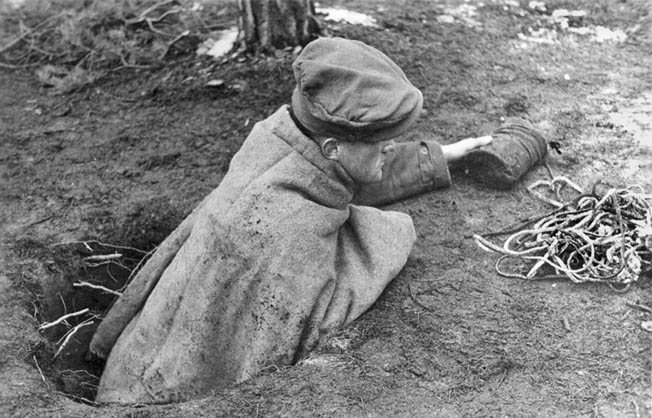
The Escape Begins
As night fell on the 24th, the first escapers began moving to hut 104. By 8:40, the first group of prisoners entered the tunnel. Johnny Bull was in front and went up the shaft to loosen the ceiling boards. He could not do it, so Johnny Marshall went up after removing his escape clothes. They were already behind schedule, and as Marshall cleared the last bit of dirt from the tunnel ceiling he poked his head out. Harry was short of the woods. Luckily, the guards were watching the compound and not the other side of the road. Marshall descended and told Bushell.
After recovering from the disappointment, Bushell and the others at the bottom of the shaft decided to use a signal rope. The escaper would wait at the top of the exit shaft, hold the rope that was tied to the ladder, wait for two tugs and crawl out to the woods.
It was now 10:30, and the plan was 90 minutes behind. Sentries circled the compound at regular intervals, but the men were able to get clear of the tunnel. However, delays were taking place in the tunnel. The cases that train travelers were carrying were taking a toll. Some cases were getting caught behind the frames in the tunnel, while other men held their cases too far in front of the trolley line inside the tunnel, causing it to tip. It was about 11:30, and only six escapers had followed the first 17 through the tunnel.
To complicate matters, the air raid siren went off. Minutes later, with the power source cut, the lights went out in the tunnel, paralyzing the escape process. Bryett recalled, “Between 12:00 and 1:00 no one got out.”
Wings Day, who was at the base of the exit shaft, moved back through the tunnel to light the fat lamps. That took about half an hour. But more problems continued. Ropes broke on the trolleys. Frames were knocked out of place, causing sand to fall, which meant reframing the damaged section. Blanket rolls got caught on the frames and under the wheels of the trolley, causing it to derail.
On the Other Side of the Fence
Bob van der Stok, escaper 18, was on his way to the railway station during the air raid and was actually stopped by a German soldier en route. Asked where he was going, van der Stok told the German that he was a foreign worker, and luckily was directed by the soldier to the shelter at the railway station.
By 4:55, a total of 87 escapers had left 104. Roger’s goal of 200 men getting out was not going to materialize. The men controlling the trap in 104 decided that number 87 was to be the last. The first traces of dawn were appearing on the horizon.
The men traveling cross-country had the toughest going of all the escapers. Thomas Nelson endured terrible conditions. He remembered, “The majority of people going through the woods like myself were heading for Czechoslovakia. We were … somewhere between fifty and a hundred kilometers from the Czech border. But it was a difficult border because it was so mountainous.”
Nelson and his partner Dick Churchill traveled by night and slept during the day. “So at a very early stage in our escape attempt we had to wade through flooded streams. And consequently we were very quickly wet and uncomfortable. But the conditions were extremely bad. We continued on this kind of basis for two nights.”
Uncovering the Escape
Near the exit hole, the situation was becoming more intense by the minute. One of the guards had deviated from his path and was heading straight toward the hole. He was walking on the near side of the road closest to the woods. Mick Shand, a New Zealander, was lying face down in the snow not moving a muscle. The guard came within a foot of the hole before he must have noticed the path made by the prisoners to the edge of the trees. He unslung his rifle and pointed it at Mick Shand. Lawrence Reavell-Carter, just inside the trees, saw the entire situation develop. He jumped out from behind the trees waving his arms yelling, “Nicht schiessen! (Don’t shoot)” The guard fired a shot wildly as Shand ran into the woods. The game was up!
Kens Rees, who was at the bottom of the shaft, recalled, “I heard the shot straight away and realized what had happened. So I backed up very quickly….”
Bryett lamented years later, “We got so close to being out in the open and we lost it.”
After the shot was heard, all the men who were in the tunnel scampered back to the safety of 104. Identity papers were destroyed and rations eaten in fear of German reprisals. The trap was closed and the covering stove returned to its original position. Soon, there was a tapping noise under the stove and the ferret Charlie Pilz emerged.
When von Lindeiner reached hut 104, he was in an extremely agitated state, warning the prisoners that they had made a grievous mistake and the Gestapo was sure to be involved. “I have never seen men so annoyed. They were absolutely livid…. The Germans had discovered 76 men had escaped and all hell broke loose,” remembered one prisoner.
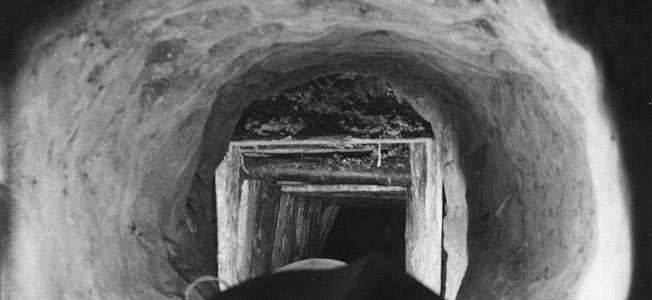
Rounding Up the Escapees
The German reaction to the escape was not surprising. First, von Lindeiner made all the necessary calls up the chain of command, including a call to Max Wielen, head of the Breslau Kriminalpolizei office, who then ordered a “Grossfahndung,” the highest form of national alert. German troops, local police, Gestapo, and Landwacht (Home Guard) were all informed.
The Führer was informed of the situation the morning of the escape. As expected, he flew into a rage and demanded that all the escapers be shot. Himmler finally convinced Hitler that not all should be shot, and so the number 50 was settled upon. Slowly but surely, the escapers were recaptured and turned over to the Gestapo. In small groups or alone, they were driven to remote locations and shot. All the Gestapo reports said the same thing: shot while escaping.
Jimmy James was caught near the Czech border and was taken to a new camp. When he arrived, he asked another prisoner, “Where are we?” The prisoner replied, “Sachsenhausen Concentration Camp and the only way out is up the chimney.”
Wings Day and Flying Officer Pawel Tobolski had a different experience. “Flying Officer Tobolski and I caught the 0105 train for Berlin and got through without incident,” wrote Day. “We left the Silesian railway station separately, met outside and made the contacts we wanted. We stayed the night in Berlin and went off to Stettin but the contacts which F/O Tobolski helped to make there failed. We made contact with two French prisoners of war about midnight on 27/28 March and they housed us with a small French prisoner of war working party in a room in a disused factory. They told us all the other Frenchmen were friends. However on the next morning between 1000 and 1100 hours after all the Frenchmen, except two, had gone to work two Gestapo officials in plain clothes came in with revolvers demanding the two ‘Tommies.’ It seemed clear that we had been betrayed. We were arrested and marched through the streets with our hands over our heads to the Gestapo H.Q. at Stettin.”
Three men made it to freedom. Per Bergsland and Jens Muller made it back to England via Sweden, and Bram van der Stok made it to Gibraltar. Fifty escapers were shot by the Gestapo, 17 were brought back to Sagan, four went to Sachsenshausen, and two to Colditz. Back at Stalag Luft III, von Lindeiner had been arrested and taken away. He escaped execution. The new commandant, Colonel Franz Braune, had just taken over when the senior British officer, Herbert Massey, was summoned for a meeting. Through an interpreter, Colonel Braune announced that 41 prisoners had been shot while escaping. When asked how many were wounded, the commandant replied that there were none. Soon, the number 41 would grow to 50.
Was it Worth the Price?
After the war, the British government began the task of tracking down those responsible for the murders. The Special Investigation Branch of the RAF began the painstaking task. Over the next several years, they accounted for 69 of the 72 criminals. Many were convicted and served prison sentences, while others were hanged for their roles in the murders. Some of the perpetrators disappeared into the Soviet bloc and were never tried. By May 1968, nearly a quarter century after the escape, the last trial was over.
The British prisoners stood face-to-face with death on that cold March night and yet pressed forward, knowing that their chances for success were slim. In far from optimal conditions, these men executed one of the most miraculous feats ever accomplished by a confined group with few resources other than their own ingenuity.
Was it worth the price? It depends. Roger Bushell wanted to break out as many men as he could to create internal havoc within the Reich. He certainly did that and paid the ultimate price.
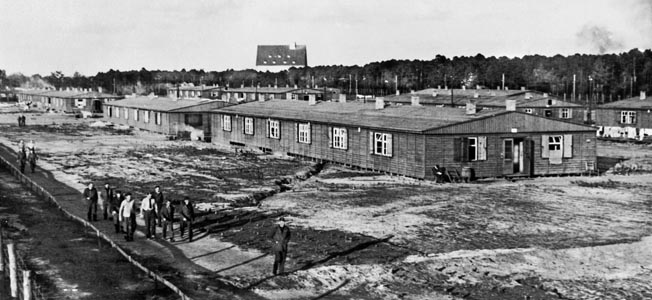
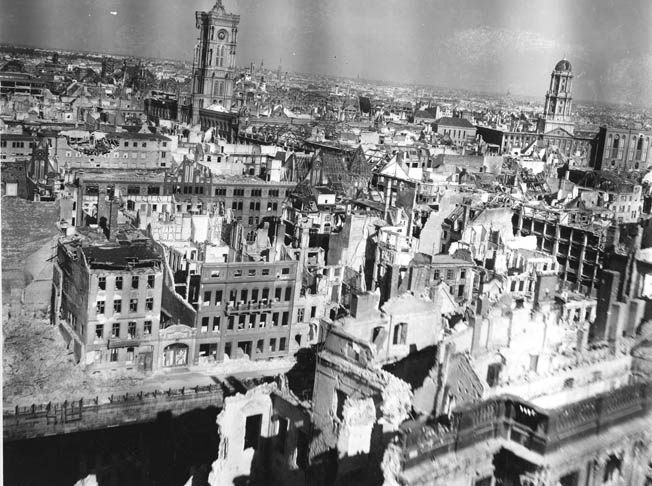
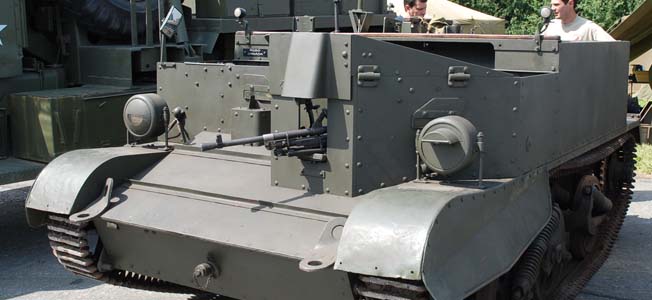
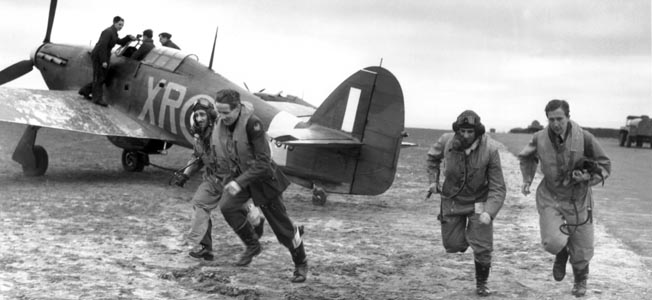
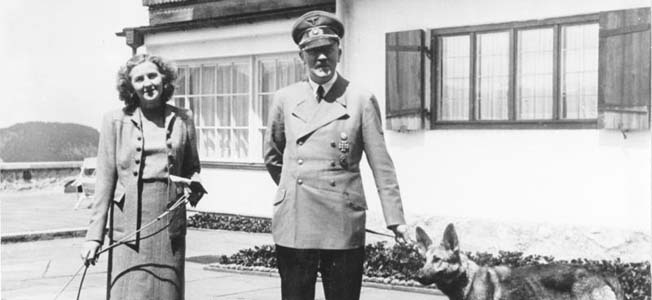
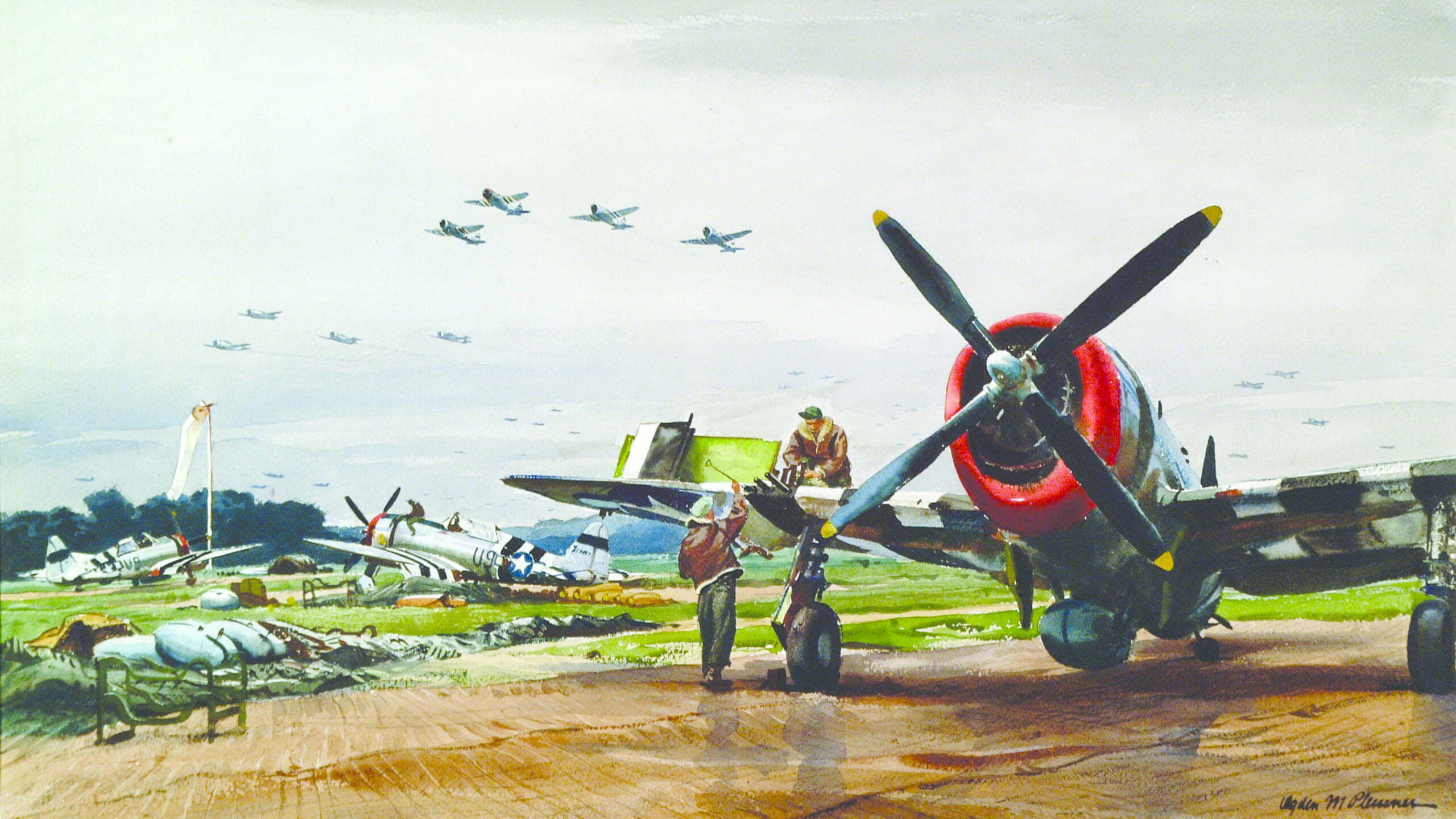
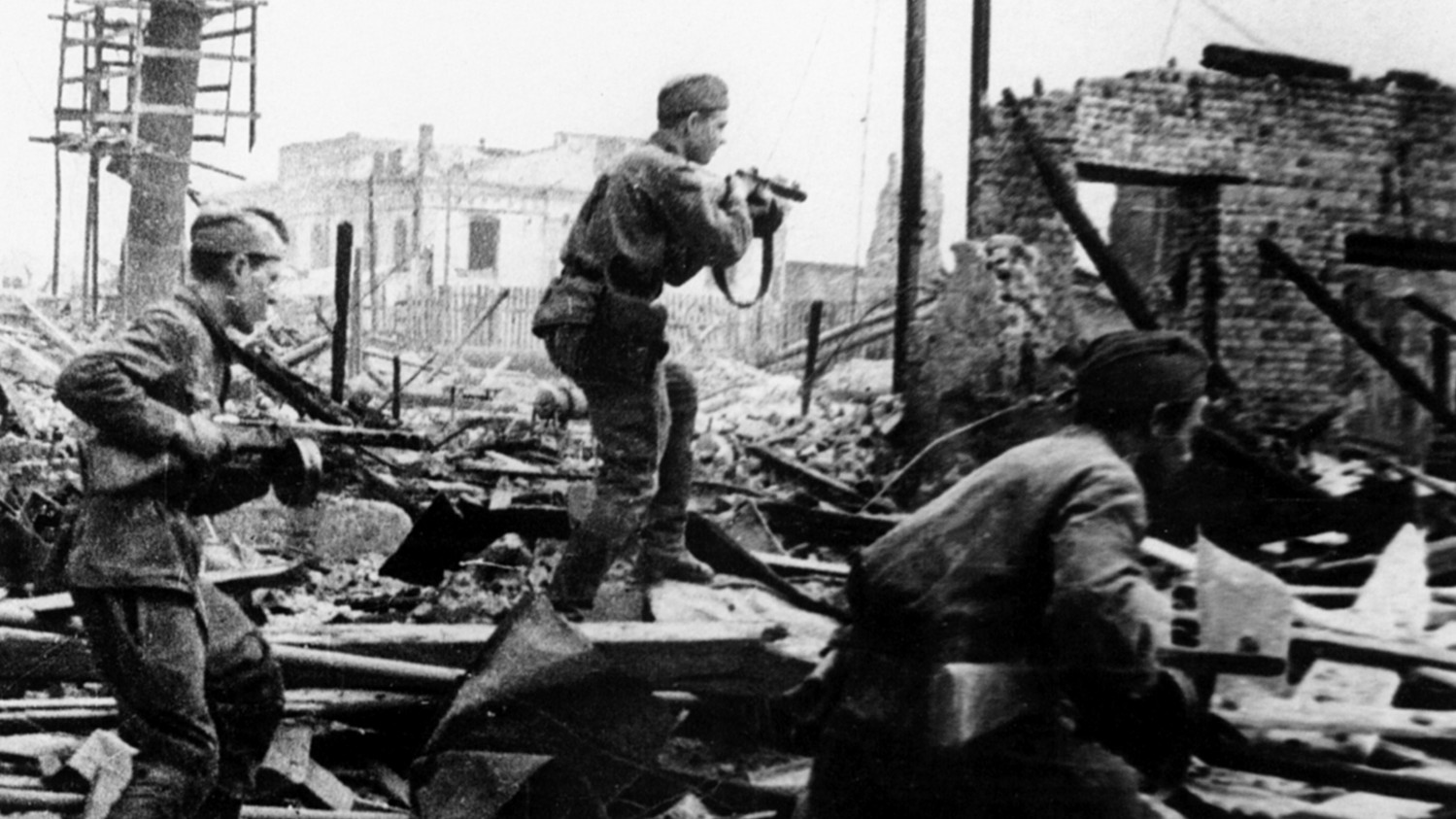
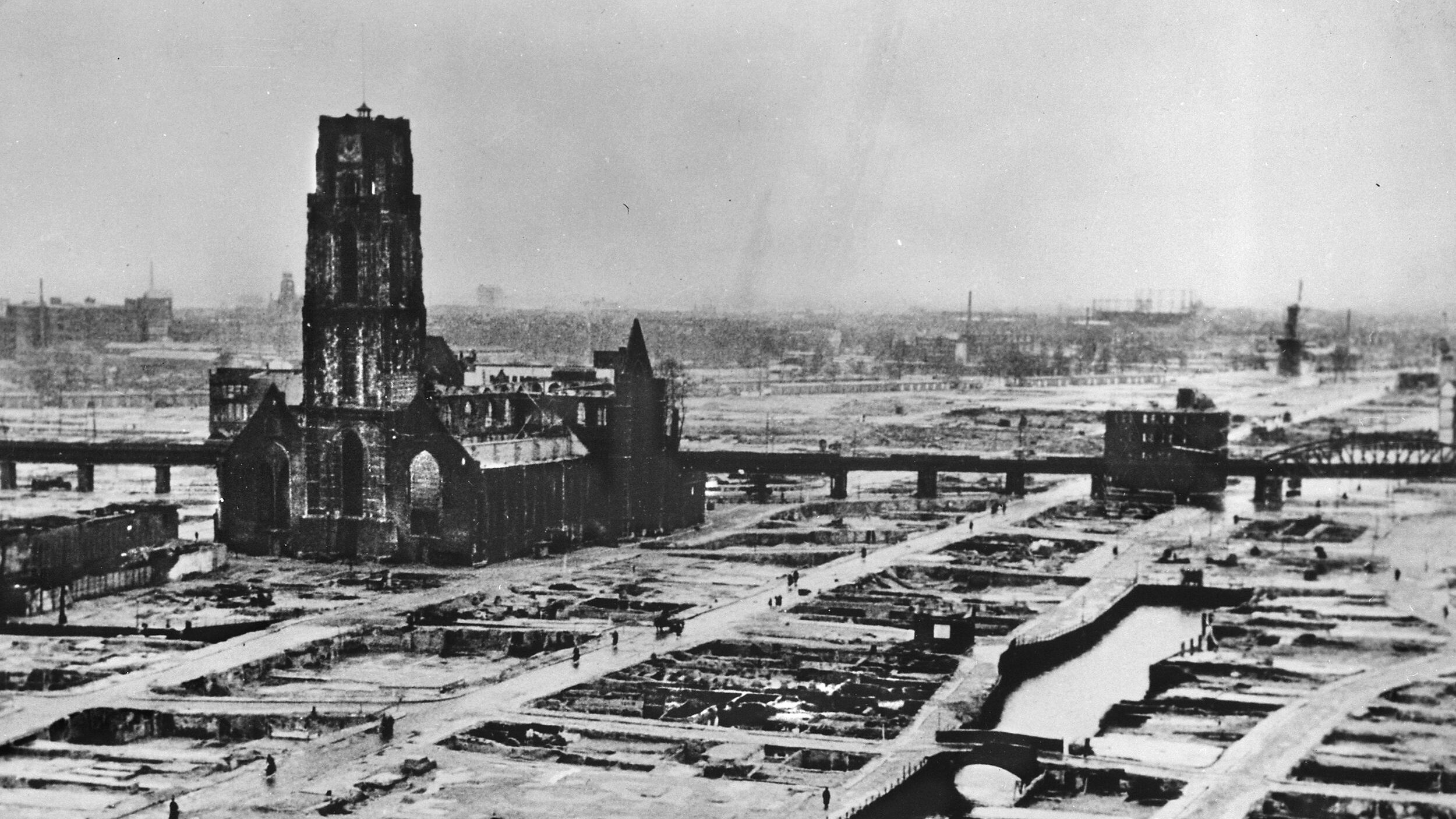
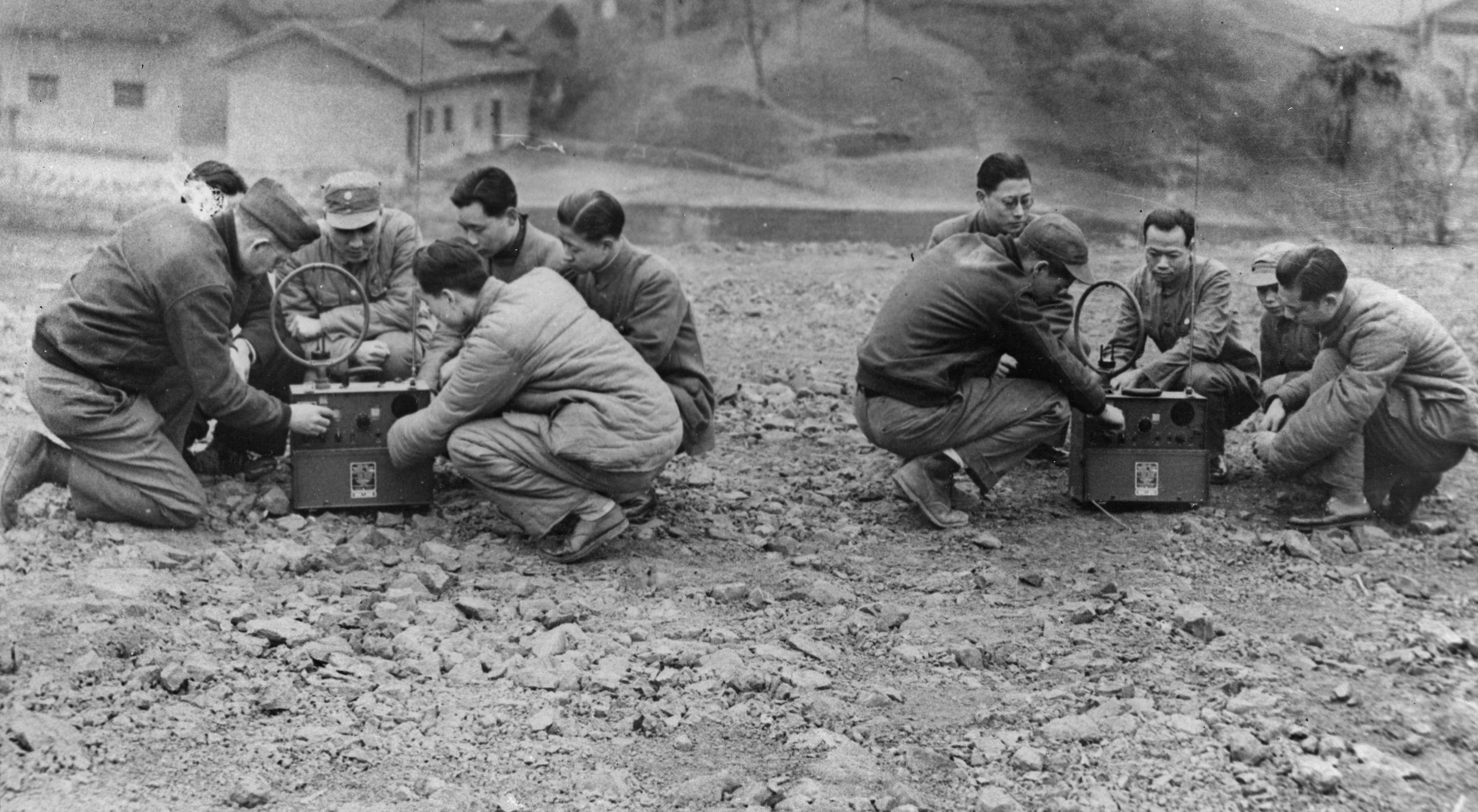
Join The Conversation
Comments
View All Comments